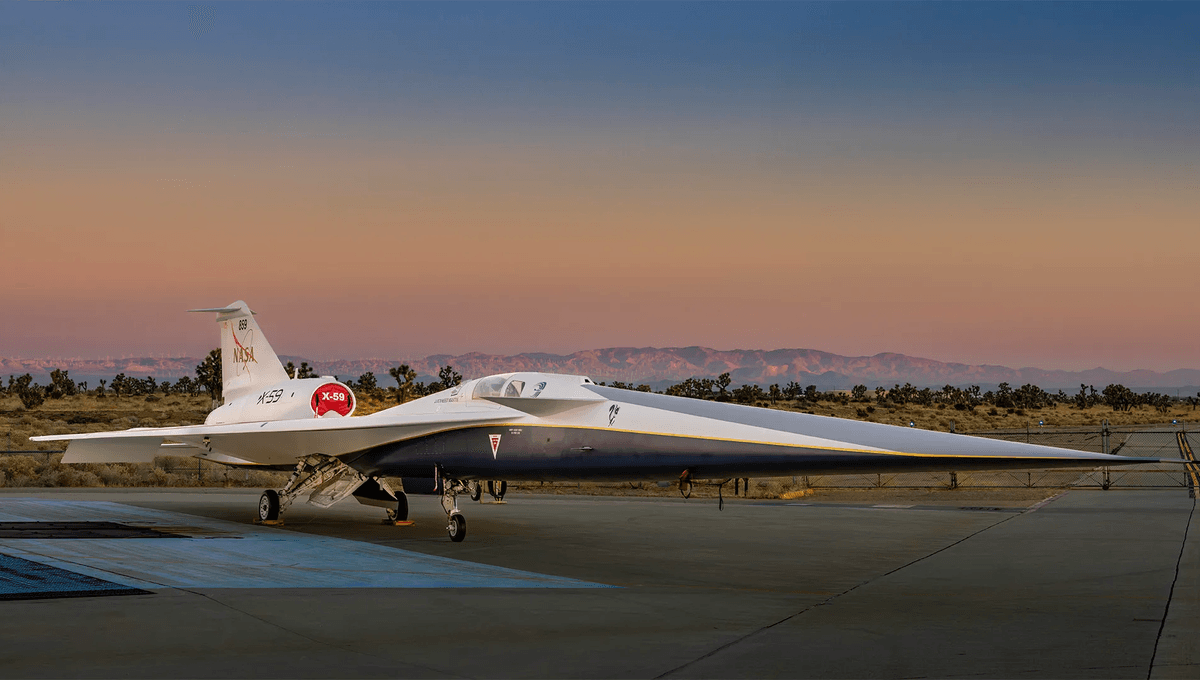
Supersonic air travel holds the promise to get us across the world faster, but it comes with a big and loud drawback: Sonic booms. Supersonic planes are not allowed to travel over land because the boom they create is loud and disruptive. NASA has been working for decades to design an aircraft that can avoid that while still traveling at incredible speeds. The result is the X-59.
Developed with Lockheed Martin, the experimental aircraft is expected to reach 1.4 times the speed of sound in air, or about 1,490 kilometers (925 miles) per hour – and it does that while staying very quiet. It was unveiled last Friday and it will be tested in actual flight later this year.
What Is A Sonic Boom And How Is It Created?
A sonic boom is a thunderclap-like sound released by an object moving through air (in this case) faster than the speed of sound. It’s a big release of sound energy, and for this reason, it is loud.
It’s not just special planes that can crack one. The characteristic crack of a bullwhip is an example of a sonic boom. Just a small one, since the tip of a bullwhip hasn’t got the same moment of a jet.
Any object moving through a fluid would create pressure waves in front and behind itself. The waves travel at the speed of sound. As the speed of the aircraft increases, these waves are squished together, and when the aircraft reaches the speed of sound they merge into a single shockwave. Boom!
As an aircraft moves faster than the speed of sound it constantly creates sonic booms, releasing these pressure waves. But as you can imagine, it might get pretty loud and annoying if you were to live under the path of a supersonic plane.
How Does The X-59 Avoid A Sonic Boom?
Avoiding the sonic boom is a matter of breaking those pressure waves – something easier said than done. The X-59 is designed to do just that. The plane has a length of 30.3 meters (99.7 feet), but one-third of it is for its thin tapered nose. This is its secret. The nose is designed to break the pressure waves, creating a vehicle that can fly faster than sound without loud bangs.
This experimental plane is not the blueprint for future passenger supersonic vehicles, but such a design will inform the supersonic plane of the future, like the Bell X-1 rocket engine-powered aircraft later informed the development of Concorde.
All “explainer” articles are confirmed by fact checkers to be correct at time of publishing. Text, images, and links may be edited, removed, or added to at a later date to keep information current.
Source Link: How Does NASA’s Supersonic Airplane Avoid The Sonic Boom?